If you want to explore the history of China through the ages there are a number of historical monuments in China including the time-honored buildings, palaces, and parks where you can learn about the glorious past of China. The presence of these monuments will take you on a walk through the country’s rich history. If you are willing to have in-depth historical information about China, we recommend that you take a wonderful guided tour to cover the major historical attractions. Also, check the opening and closing times for each so that you can organize your time. Make sure that you go through the complete list of historical sites in China for a great trip:
List of Historical Monuments in China
1. Great Wall of China, Beijing
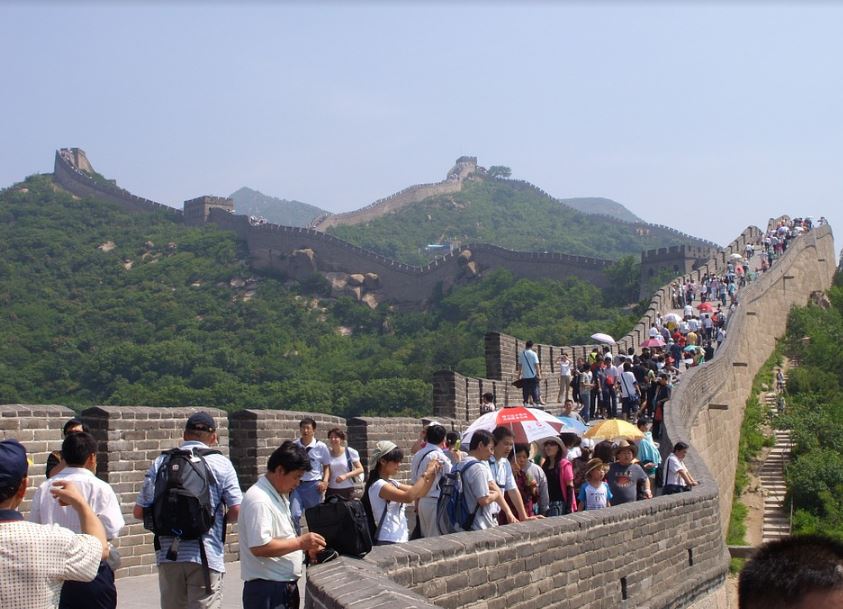
Great Wall of China, Beijing
China’s ‘Wonder of the World’, the Great Wall of China is not just China’s but one of the world’s topmost visited attractions. This popular monument in China doesn’t really need much of an introduction. Though the entire length of the great wall is not easy to discern, the beginning of its construction dates back to the 5th – 8th century BCE. Most of the wall that stands today is widely regarded as the ‘great wall’, which was built during the reign of the Qing dynasty to defend the region against Mongol insurgents. The wall in its entirety is 21196 km long. The Qing wall in itself stands at 8850 km, of which 6259 kilometers is an actual wall and the rest is trenches and natural defenses. With more than 25000 watchtowers, this entire wall length comprises it. Though a substantial part of the wall is today in ruins, around 30% of it, parts of the wall around Beijing are kept in top condition today, mainly because they are a huge tourist attraction. Areas near Beijing that see the most tourists are Jinshanling, a famous hiking track, and Mutianyu, the best-kept section of the Wall. There are various tours of the great wall, and many sections you can visit depending on your preferences. If you went to China and haven’t seen it, then my friend you have seen nothing!
Address: Great Wall of China, Beijing, China.
2. Forbidden City, Beijing

Forbidden City, Beijing
The Forbidden City served as the palace of the emperor of China for 500 years between 1420 to 1912 and is spread in a 180-acre large complex. Glorifying the ancient Chinese palatial architecture, this sprawling complex contains it 980 buildings. It is recognized as a UNESCO monument in China. It is named so because it was forbidden to enter the complex without the permission of the emperor. Today, the Forbidden City is the location of the Palace Museum. It’s divided into two parts, the Outer Court in the south where the emperor exercised his authority over his subjects, and the Inner Court in the north which was his residence. The entire complex is full of stunning architecture and buildings and is one of China’s top attractions. With more than a million artifacts of bronze wear, ceramics, paintings, jade, and time wear, the collections of the Palace Museum are unbelievably extensive. You will start your tour at the Meridian Gate and exit out of either the Gate of Divine Prowess or the East Prosperity Gate.
Address: Forbidden City, Beijing, China.
Read More: What to do in China
3. Xian City Wall, Xian, Shaanxi Area
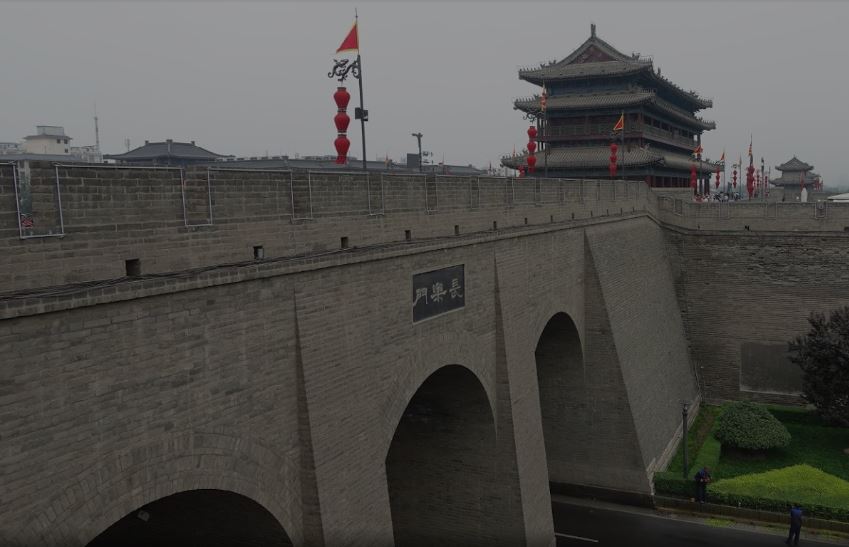
Xian City Wall, Xian, Shaanxi Area
If you take a trip to Xian by train, the first thing you will see upon arrival will be a high battlement, stretching along the railway. This is the City Wall of Xian, one of the local landmarks numbering over 600 years old, and the only extant city wall of modern China. The City Wall was built in the XIV century by a son of Zhu Yuanzhang (the Hongwu Emperor), the first ruler of the Ming dynasty. Erected along the perimeter of the whole city it is supported by a foundation of an earlier city wall built in the epoch of the Tang dynasty reign in Xian. In those far-off days, this wall of rectangular shape – 12-m high and 15-18-m wide, was built to protect the city which was the capital of the Ming Empire (the Empire of Great Min). Initially, a mixture of earth with rice fibrin and burnt lime was used as a building material. Later, the wall was completely strengthened with brickwork and from above, fitted with a drainage system. The City Wall featured 4 main entrances located in cardinal directions: Anding (harmony peace) in the west, Changle (eternal joy) in the east, Anyuan (forever harmony) in the north, and Yongning (eternal peace) in the south. Every entrance of this iconic monument in China was protected by three towers (dungeon, gun turret and observation tower) with a folding bridge at the gate.
Address: Xian City Wall, Xian, Shaanxi Area
4. Temple of Heaven, Beijing

Temple of Heaven, Beijing
The Temple of Heaven is a collection of religious buildings, which was visited by the emperors of the Ming and Qing dynasties, and today by thousands of visitors daily. The temple was open to the public in 1988., and the temple complex is enormous, even bigger than the Forbidden City. The Chinese emperors were regarded as sons of heaven and thus, performed duties on behalf of the gods. It is also the reason their own house couldn’t be bigger than that of god’s. The features of this ancient monument in China are quite stunning, especially inside the Hall of Prayer for Good Harvests, where the emperors prayed twice every year. The Circular Mound Altar is where sacrifices were performed, and is regarded as the temple’s most important part. There are other monuments of importance in the complex, such as the Imperial Vault of Heaven, the Palace of Abstinence, Divine Music Administration, and Heaven Worship Culture. The extensive parklands around the temple serve many purposes.
Address: Temple of Heaven, Beijing, China
Discover: Famous Monuments and Statues in New York
5. Tiananmen Square

Tiananmen Square
In central China, Tiananmen is a large public square and another expansive and brilliant Chinese complex housing some very important monuments of China. Just south of the Forbidden City, the huge and open Square is always full of people. This immense space is home to some of Beijing’s most important buildings. It has been renovated and mostly enlarged several times over the last few centuries. The square’s monuments are many. The Monument of People’s Heroes, made out of granite, is one of the largest monuments in China. The Tiananmen Tower was built far back in 1417 and is located in the north end of the square. The tower also serves as the southern entrance to the Forbidden City. In the Square, you will also find the National Museum of China tracing the history and the development of China through its display of various relics. The Great Hall of the People sits opposite the National Museum, is a stunning building that is used for various governmental and diplomatic purposes.
Address: Tiananmen Square, Beijing, China.
6. Hanging Temple, Datong, Shanxi Province

Hanging Temple, Datong, Shanxi Province
The Hanging Temple is located about 60 kilometers southeast of Datong, China, in the Shanxi province, and is one of the world’s forgotten wonders. In apparent defiance of gravity, Clinging to a crag of Hengshan mountain, it comprises 40 rooms linked by a dizzying maze of passageways. This ancient monument in China is said to have been built by a monk named Liao Ran during the late Northern Wei Dynasty (386-534) and restored in 1900. It was constructed by drilling holes into the cliffside into which the poles that hold up the temples are set. Interestingly, the temple is dedicated to Confucianism, Taoism, and Buddhism religions, not just one religion. All of three practiced within the temple and represented in 78 statues and carvings throughout the temple.
Address: Hanging Temple, Datong, Shanxi Province, China.
7. Sakyamuni Pagoda Fogong Temple, Shanxi Province
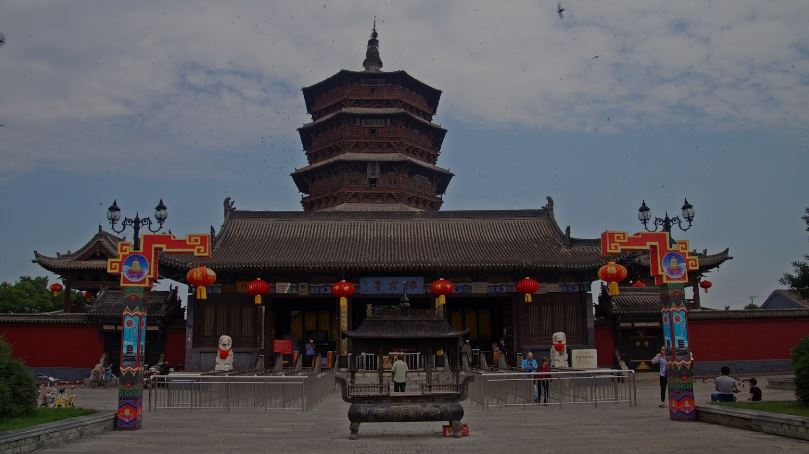
Sakyamuni Pagoda Fogong Temple, Shanxi Province
During the Liao Dynasty (916–1125), Yingxian Wooden Pagoda was built in 1056 and it just 75km from Datong. As well as the only Buddhist temple that was totally built with wood, it is the oldest all-wood pagoda in China. This old monument in China is also called Sakyamuni Pagoda of Fogong Temple. It is the tallest all-wood pagoda in the world. The total weight of the Pagoda is about 7,400 metric tons that are standing at 67.31 meters tall with a base diameter of 30.27 meters. Yingxian Wooden Pagodais some 30 meters higher than the famous White Pagoda in Beijing’s Beihai Park if you compare, almost 3 meters higher than the Big Wild Goose Pagoda in Xi’an. It was constructed with wood without any nails.
Address: Sakyamuni Pagoda Fogong Temple, Shanxi Province, China.
8. Giant Wild Goose Pagoda, Xian, Shaanxi Province
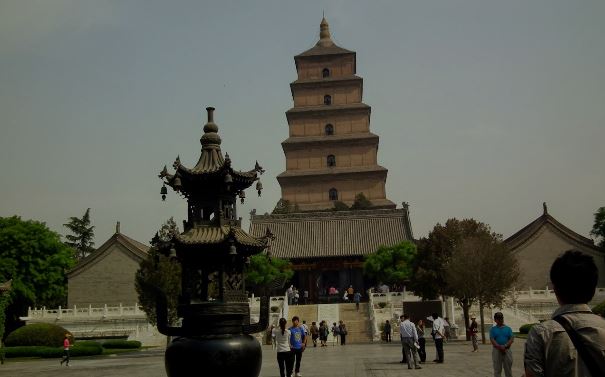
Giant Wild Goose Pagoda, Xian, Shaanxi Province
Located in Xi’an, Shaanxi Province, China, the Giant Wild Goose Pagoda, or Big Wild Goose Pagoda is a five-story tall pagoda constructed during the Middle Ages. The pagoda is located in the Da Ci’en Temple complex. Originally built in 652 CE, during the reign of the Tang dynasty, rebuilt again in 704, and refurbished during the Ming Dynasty and in the 20th century. It holds sutras and Buddhist figurines. Originally built in 652 CE by emperor Gaozong of the Tang Dynasty (617-907), the Big Wild Goose Pagoda was constructed to collect Buddhist works and relics brought from India by the scholar, monk, traveler, and translation Xuanzang. Xuanzang travelled to China collecting Buddhist sacred works. He became famous for his 17-year journey to India, and religious sites in what are now the countries of Nepal, Pakistan, and Bangladesh. He traveled to these countries, collecting Buddhist scriptures and artifacts because he was concerned that the nature of Buddhism that had reached China was neither complete nor correctly interpreted. His journey became the influence of the famous Chinese story Journey to the West. The entrance Fee of this historical monument in China is 50 CNY to enter the Da Ci’en Temple Complex and 30 CNY to enter Giant Wild Goose Pagoda and opening hours are 08:00-17:00 every day.
Address: Giant Wild Goose Pagoda, Xian, Shaanxi Province, China.
Read More: Best places to eat in China
9. Birds’ Nest, Beijing

Birds’ Nest, Beijing
This world-famous stadium was built during the 2008 Beijing Olympics. Due to its similar design, it is also called the Bird’s Nest Stadium. Built in just 4 years between 2003 and 2007, this majestic and spectacular Beijing National Stadium (BNS) was the home ground for the Beijing Olympics. The stadium uses random steel beams to hide those required for the movable roof, and in doing so the steel beams gave the stadium the look of a bird’s nest. After the Olympics, the 80000 seater stadium has largely been used to host football matches, concerts, and some athletic events. There are plans to build a shopping mall and a hotel to attract a larger public towards it. If you’re visiting Beijing for the first time, this stunning monument in China is worth a look.
Address: Birds’ Nest, Beijing, China.
10. Yonghe Lamasery

Yonghe lamasery
The Yonghe Lamasery is also known as Yonghe Temple or Lama Temple which is China’s biggest lamasery. It was given this status only in 1722. Yongzheng Emperor, Prince of China used to live here and converted half of it into a lamasery for Buddhist monks, and eventually became the Chinese center for Lama Administration. As you go along the central axis of the temple, you cross 5 main halls. The Hall of the Heavenly Kings is the first, with a statue of the Maitreya Buddha and the 4 Heavenly Kings. Following this, you’ll come to the Hall of Harmony and Peace, which houses three bronze statues, one each of Gautam Buddha, Kasyapa Matanga, and Maitreya Buddha. This is also the main hall of the temple. Next comes the Hall of the Wheel of Law, which was primarily a place of education and for reading. Notably, it also contains the Five Hundred Arhat Hill Carving. Lastly, comes the Pavilion of Ten Thousand Happiness, which contains a quite magnificent statue of the Maitreya Buddha. The statue stands 18 meters above the ground and 8 meters below, and it is made out of stunning white sandalwood.
Address: Yonghe Lamasery, Beijing China.
11. Shanghai Tower
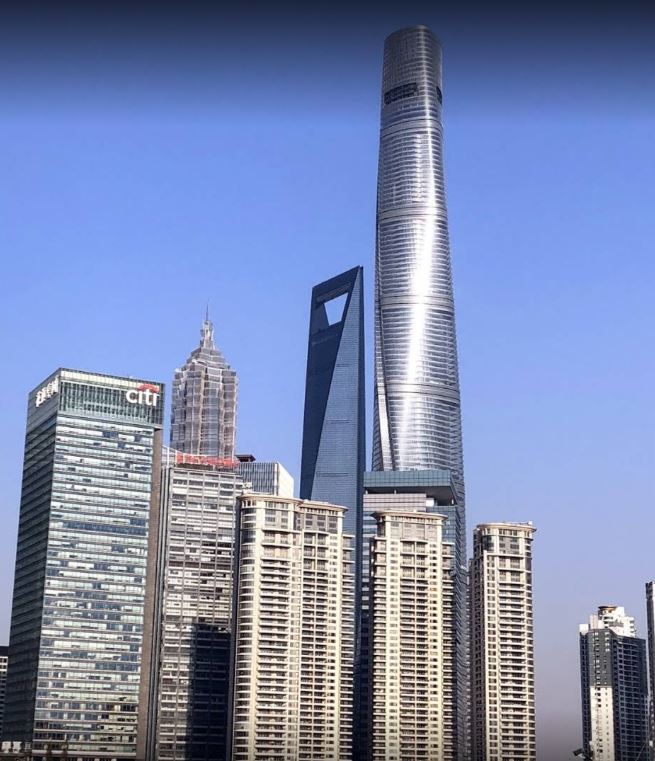
Shanghai Tower
Shanghai Tower is China’s tallest standing structure, and the world’s second tallest, soaring into the skies at a height of 632 meters. Burj Khalifa is the only building in Dubai taller than the Shanghai Tower. This staggering and imposing tower sits in Lujiazui in Pudong. Its construction was completed in 2015, though it is not fully open to the public yet. The public has access to the building’s elevator system, which in itself is a state-of-the-art system in a building with 128 floors. When exactly the building will open to the public is not yet known. Currently, it has been overdue by just over a year. Even then, you just have to see this beautiful monument in China. Though since it’s more than 600 meters into the sky, you’ll probably see it from any open space in the city!
Address: Shanghai Tower, Shanghai, China.
12. Jade Buddha Temple

Jade Buddha Temple
The Jade Buddha Temple is home to two stunning white jade Buddha statues that were brought into the country in the late 19th century. One of the most visited monuments in China, the temple was built in 1928, after the old temple housing, the statues were destroyed in the revolution. The two statues portray the Buddha in two positions. One in which he is sitting, meant to depict his time in meditation and achieving enlightenment. This statue is approximately 2 meters tall. The second statue is of a reclined Buddha, symbolizing his death and final resting, which is around 1 meter long. Grand Hall is the other point of interest in the temple which houses many spectacular statues as well.
Address: Jade Buddha Temple, Shanghai, China.
14. Old Summer Palace
After the Quanlong Emperor, the Old Summer Palace served as the residence and the working place of the emperors of the Qing Dynasty. The Old Summer Palace is known as one of the most spectacular complexes of palaces and gardens in all of China. It was raided and destroyed by the British during the second Opium War, and today is a popular and scenic tourist attraction. This must-see monument in China was heavily adorned with beautiful pavilions, pillars, statues, ponds, rockeries, and so on. A huge effort had gone into making it the most premier location in China being the residence of the emperor (Forbidden City was only the official residence).
A lot of the architecture was taken from the west as well, giving the garden a distinctive identity from typical Chinese gardens, which were usually a fusion of inspirations drawn from inside China. In the present day, a lot of these objects and artifacts are displayed in European museums, leaving very little in the garden itself. However, visiting the Old Summer Palace and seeing the ruins of the stunning buildings and structures, one can imagine what it was like in its prime.
So far we have discussed the best monuments in China, which contains the proper information regarding all the top monuments in China. Hope you might have loved reading this article and if you love to know more about China then kindly head to our other articles as well which will help you to get knowledge about China.
The post Famous Monuments in China | Most Visited Monuments in China appeared first on World Tour & Travel Guide, Get Travel Tips, Information, Discover Travel Destination | Adequate Travel.